 |
 |
Microclimate Analysis in the Great Basin Desert
Debbee Davies, Lara Hollingworth, Christy Wong
Summer Session 2000 Field Course, BIOL 417a
Biology Department,
Western Washington University
Bellingham, WA 98225-9160
Introduction
The Great Basin Desert of the western U.S. reaches its northern limits in the Alvord Basin of southeast Oregon. The Alvord Basin is an arid region in the eastern rain-shadow of Steens Mountain. The Alvord has an abundance of plants and animals, despite its aridity. Lizards are an especially obvious component of the community. Each of the four common lizard species has its own unique spatiotemporal distribution. The causes of these species-specific patterns of distribution are unknown. Some obvious but heretofore unestablished causes are the macrohabitat microclimate, microhabitat microclimate, and the spatiotemporal patterns of the predators and prey of each lizard species. Measure and analysis of the microclimates are essential to understanding what these lizards do and when they do it. Our descriptive study of the microclimates in an established lizard ecology study site included thermocouple readings of substrata, sun/shade patterns along transects, and use of a portable weather station to measure the principal parameters of microclimate.
Back To Top
Weather Methods
- Campbell Scientific's CR-10 Weather Station was used to collect weather data 2m above the ground continually for wind speed, air temperature, relative humidity, and solar radiation on horizontal surfaces.
- Data were manually collected for an 8-day period, July 3-10, in 2-hour intervals from 0700 to 2100 hours.
Back To Top
Thermocouple Methods
- Twenty thermocouples were placed in a variety of microhabitats: full sun sand, full sun hard pan, full shade sand, full shade hardpan and soil depths of sand at 10 and 20cm. Also 7 different locations within a Greasewood and Sage Brush were sampled.
- Thermocouple readings were taken manually 5 times a day to represent differences in lizard activity.
Back To Top
Sun and Shade Methods
- Eighteen representative 20-meter transect lines of the north and south plot were measured in the morning, midday, and evening. These transects were the same ones used for vegetation and substratum analyses.
- Patches were labeled: 1. Open, without vegetation cover, 2. Vegetative cover with the following subcategories a) woody perennial b) grass.
- Patches were measured for length using a 20-meter tape.
- Shade types for 5 cm stretches or longer of vegetation cover were classified as full sun, full shade, dappled shade, and filtered shade. The relative % of these shade categories were estimated for each plant.
Back To Top
Results
The average sun/shade patch length of brush habitat is the longest in the evening and the shortest in midday. The average sun/shade patch length in open habitat was the longest in the morning and the shortest in the evening. In brush habitat, there is more filtered shade in the morning and evening hours than dappled, full shade, or full sun. At midday, there is little to no filtered shade, but abundant dappled shade. Full shade % in a brush habitat and full sun % in an open habitat remains almost constant throughout the day. On the sunniest day during the study period (highest solar radiation) the thermocouple in full sun on soft sand read a higher temperature over the full day period than the air temp and the thermocouple in full shade on soft sand. Over the entire study period, the full sun thermocouple read a higher temperature than full shade or air temperature until approximately 1700 hours when it dropped below air temperature. The daily wind speed ranged from 1.802-17.99 mph, the temperature from 10.4-34.3°C, the humidity from 11.7%-50.1%, and the solar radiation from 0-1014 watts/m/s2.
Back To Top
Conclusions
The four weather parameters we measured using the CR-10 (wind speed, temperature, relative humidity, and solar radiation) were highly variable throughout the day and over the entire study period. It should be noted that the wind speed measurements were obtained by recording wind gust speed at specific hours of the day, not averages. The data we obtained from the thermocouples were used to compare soft sand - full sun and shade with the air temperature. The rest of the thermocouple data were archived until further investigation of equipment technical shortcomings can be conducted. The results from the sun/shade data provide potentially valuable information about the effects of microclimate on lizard activity.
Back To Top

Back To Top
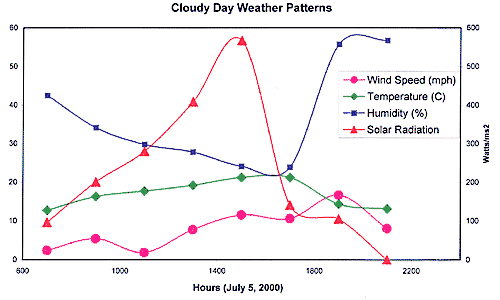
Back To Top
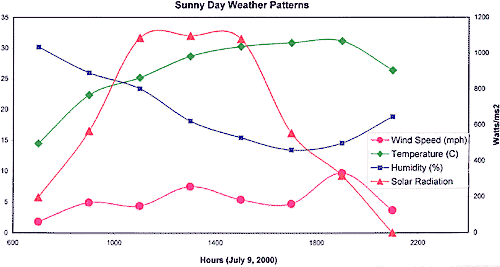
Back To Top
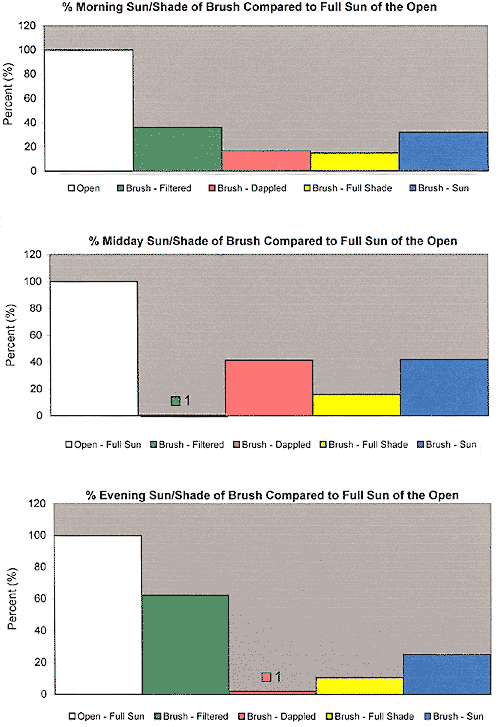
Back To Top

Back To Top

Back To Top
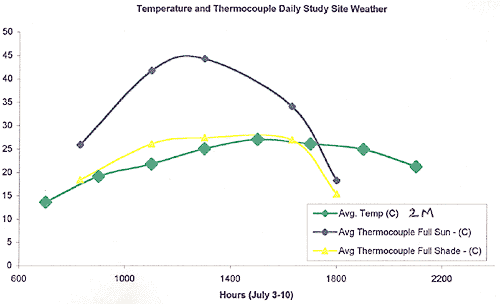
Back To Top

Back To Top
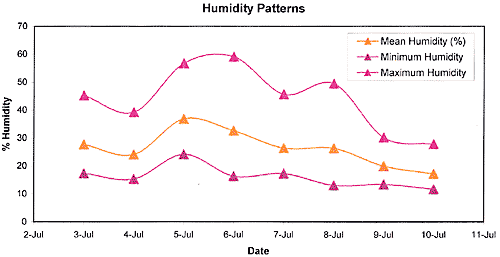
Back To Top
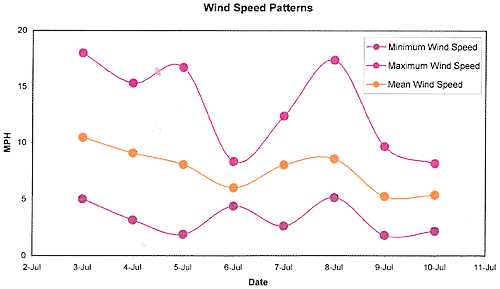
Back To Top
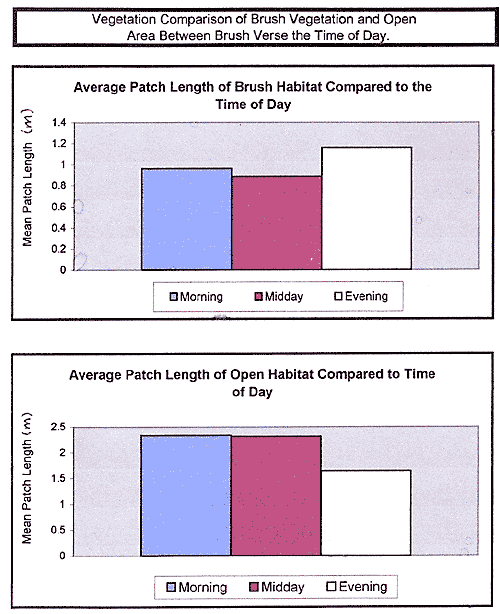
Back To Top
Home Course Description Course Application Practical Information Class Projects Photo Gallery
|
 |
 |
|

